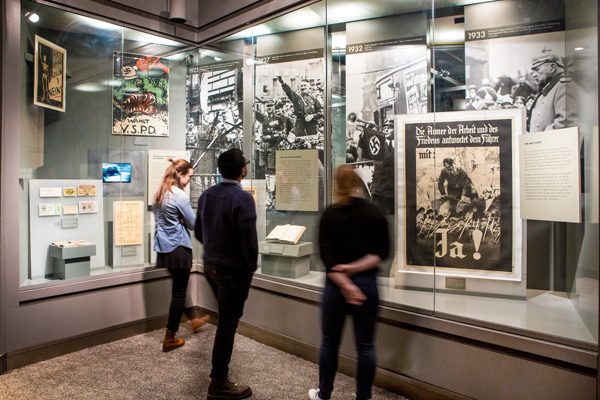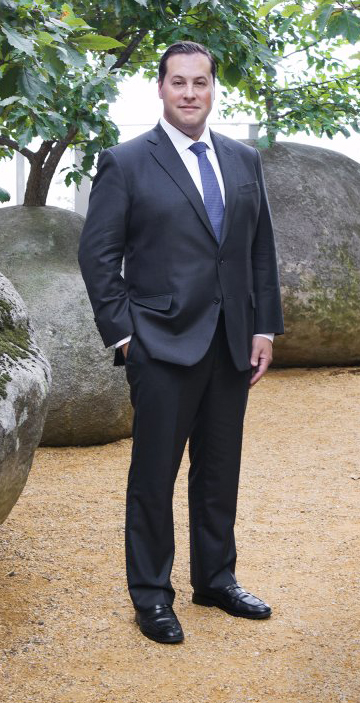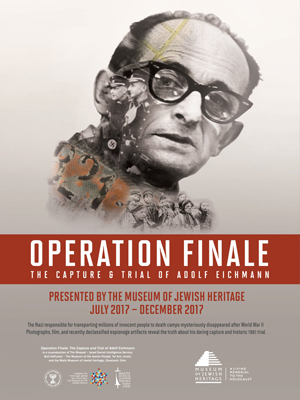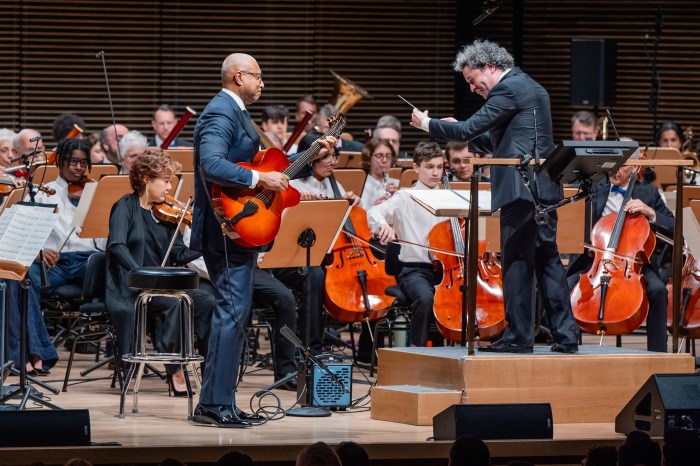
In addition to innovative temporary exhibitions and programing, the MJH displays an extensive permanent collection of artifacts and documents connecting visitors to the dark years of the Showa, to assure we never forget.
BY JACKSON CHEN
He’s only been at the helm of the Museum of Jewish Heritage for nine months, but Michael Glickman is celebrating the 20th anniversary of the Battery Park City institution.

Michael Glickman joined the Museum of Jewish Heritage as its new president last September, and less than a year into his tenure, he is organizing dramatic, landmark exhibits to commemorate the institution’s 20th anniversary.
Since his start as museum president last September, Glickman, 39, has been pushing the museum at 36 Battery Place to expand its reach into the community. At the same time, he has had to focus on prepping the museum infrastructure and staff for the 20th anniversary.
Glickman came prepared with 13 years spent at the Center of Jewish History — the last 10 of which he spent leading the organization. Following his time at the center, he moved on to a vice president role at Long Island University for two years. Once the board of MJH offered him the opportunity to head the museum, Glickman said he was eager to jump back into leading a cultural institution with such a strong and historically vital mission.
“This is, in my opinion, one of the most important cultural institutions in the city,” Glickman said. “And I would say certainly one of the most significant and most meaningful in the Jewish community anywhere in this country.”
Developer Bruce Ratner, the museum’s chairman, said Glickman was the ideal candidate due to his experience, but also his fundamental understanding of the institution’s mission to educate and memorialize.
“Especially in this historical moment, where we have to redouble our efforts to answer ignorance with knowledge and education, Michael’s interest in broadening the museum’s reach and expanding opportunities for public engagement is increasingly important,” Ratner said in a statement.
In a bid to engage locals and solidify the museum’s role in the neighborhood, Glickman is offering free museum memberships until June 2018 to Battery Park City residents.

The Museum of Jewish Heritage — A Living Memorial to the Holocaust, has been located in Battery Park City for 20 years, but Glickman’s priority is to make sure that it’s not simply a point on a map, but part of the fabric of the local community.
“Battery Park City is this amazing community, there’s just so many things that are happening down here,” Glickman said. “And I wasn’t satisfied with the role we were playing as an institution. I don’t think we were doing enough for our neighbors quite honestly.”
The museum announced in May that it is offering free museum memberships to residents who live in the neighborhood’s 10280, 10281, and 10282 zip codes. After completing a quick application and providing proof of residence, the new members will receive free general admission, access to member-only programming and events, discounts to the museum shop, café, and some programs, and two guest passes.
“This is us making an investment in the community,” Glickman said of the free membership. “We’re not looking at it from a revenue perspective, but really being sure those who live around Battery Park City have the opportunity to take advantage of what we have to offer.”
The museum president said he’s already seen dozens of residents claim their free membership, but will continue to monitor the numbers and see if it’s something the museum wants to extend beyond next year’s deadline.
Beyond helming the community-engagement strategy and handling the museum’s day-to-day operations, Glickman is also focusing on the launch of the 20th-anniversary exhibits, beginning on July 16.
The institution’s full name is the “Museum of Jewish Heritage — A Living Memorial to the Holocaust,” and Glickman holds that second role as just as important as the first.

The upcoming exhibition “Operation Finale” explores the gripping capture and trial of Adolf Eichmann, one of the major figures responsible for the Holocaust — and one of the last high-ranking Nazis ever to be brought to justice.
Glickman is particularly proud of the blockbuster exhibition “Operation Finale,” which opens for museum members on July 16, and the general public on Sept. 10. It will explore the capture and trial of Adolf Eichmann, one of the major figures responsible for the Holocaust — and one of the last high-ranking Nazis to be brought to justice. The exhibit delves into the riveting final chapters of Eichmann’s story, in which he is tracked down in Argentina by the Israeli Secret Service, extradited back to Tel Aviv, put on trial, and found guilty of crimes against humanity in 1961, Glickman explained.
And providing a more personal side of the story, the museum will also feature “New Dimensions in Testimony,” an exhibit that allows visitors to have virtual conversations with Holocaust survivors. Possible through holographic imagery, voice recognition, and a digital library with more than 2,000 hours of survivor testimony, museumgoers can have nearly instantaneous back-and-forth conversations with those who lived through the Holocaust, Glickman said.
“There’s something quite interesting about having these really powerful survivors on one side of the building having a conversation, and on the other side watching Eichmann get captured and tried,” Glickman said.
The museum also plans to introduce a publically accessible destination for survivor testimony where visitors will be able to walk through a library that contains tens of thousands of testimonies from around the world.
“I want to make sure that this museum continues to offer our neighbors a point of destination,” Glickman said. “It’s about community, it’s about education, it’s about just being that resource.”

















